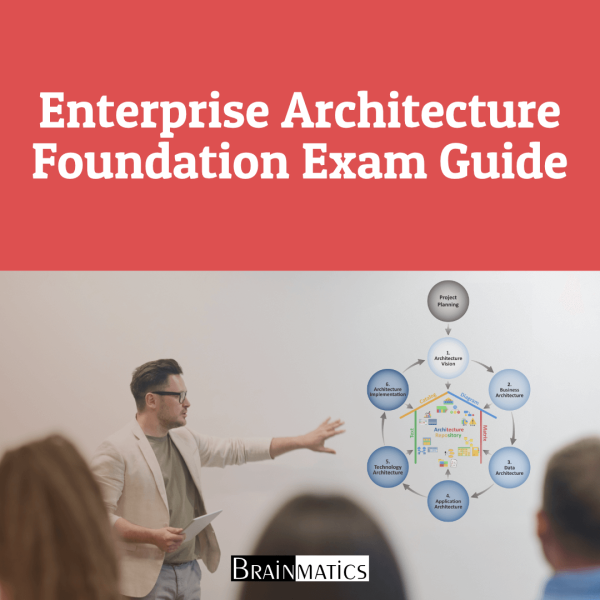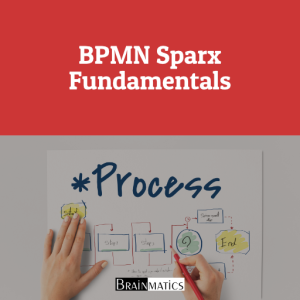The Open Group Architecture Framework (TOGAF) adalah sebuah framework untuk arsitektur enterprise yang menyediakan sebuah pendekatan komprehensif untuk mendesain, merencanakan, menerapkan dan mengelola arsitektur informasi enterprise. TOGAF ini merupakan standar Open Group yang telah terbukti digunakan oleh organisasi-organisasi terkemuka dunia dalam meingkatkan efisensi bisnis. TOGAF juga telah menjadi standar Enterprise Architecture yang paling terkemuka dan handal, standar yang konsisten baik metode dan komunikasinya diantara para profesional Enterprise Architecture.
Para profesional Enterprise Architecture memilih TOGAF karena kredibilitas industri, efektivitas kerja, dan karir peluangnya lebih besar. TOGAF ini akan membantu para praktisi menghindari keterbatasan pengembangan Enterprise Architecture menuju metode yang eksklusif, memanfaatkan sumber daya secara lebih efisien dan efektif, dan mewujudkan keuntungan investasi yang lebih besar baik dalam bisnis maupun suatu organisasi.
Pada training ini, peserta akan mempelajarai secara mendalam mulai dari pengenalan konsep dasar hingga praktiknya dalam membangun Enterprise Architecture dengan menggunakan framework TOGAF sesuai standar Open Group.
OBJECTIVES
1. Memahami konsep dasar Enterprise Architecture (EA)
2. Memahami metodologi pengembangan EA dengan menggunakan framework TOGAF
3. Memahami dasar tahapan-tahapan dan teknik pada Architecture Development Method (ADM) framework TOGAF
4. Memahami soal latihan pada ujian sertifikasi TOGAF Foundation Part 1
PREREQUISITES
Menguasai Materi Enterprise Architecture Development Practice
CONTENT
1. Introduction
1.1. The TOGAF Certification for People Program
1.2. Certification Document Structure
1.3. Program Vision and Principles
1.4. TOGAF 9.2 Foundation
1.5. The Certification Process
1.6. Preparing for the Examination
2. Basic Concepts
2.1. Introduction to TOGAF 9.2
2.2. What is an Enterprise
2.3. What is Architecture in the Context of TOGAF
2.4. Why do We Need Enterprise Architecture
2.5. What is an Architecture Framework
2.6. Why do We Need a Framework for Enterprise Architecture
2.7. Why is TOGAF Suitable as a Framework for Enterprise Architecture
2.8. What are the Different Architecture Domains that TOGAF deals with
2.9. What does TOGAF Contain
3. Core Concepts
3.1. What are the Phases of the ADM
3.2. Deliverables, Artifacts, and Building Blocks
3.3. The Enterprise Continuum
3.4. The Architecture Repository
3.5. Establishing and Maintaining an Enterprise Architecture Capability
3.6. Establishing an Operational Architecture Capability
3.7. TOGAF Framework vs Other Frameworks
3.8. Document Categorization Model
4. Introduction to the Architecture Development Method
4.1. The Architecture Development Cycle
4.2. What is the Relationship of the ADM to Other Parts of TOGAF
4.3. Key Points of the ADM Cycle
4.4. How to Adapt the ADM to Enterprise
4.5. The Need for Architecture Governance
4.6. Scoping the Architecture Activity for Organization
4.7. Integrating the Architecture Domains for Organization
5. The Enterprise Continuum and Tools
5.1. Overview of the Enterprise Continuum
5.2. The Enterprise Continuum and Architecture Re-Use
5.3. The Constituent Parts of the Enterprise Continuum
5.4. The Architecture Continuum in Detail
5.5. The Solutions Continuum in Detail
5.6. Using the Enterprise Continuum within the ADM
5.7. The Architecture Repository
5.8. Tools Standardization
6. The ADM Phases
6.1. Preliminary Phase
6.2. Phase A: Architecture Vision
6.3. Phase B: Business Architecture
6.4. Phase C: Information Systems Architectures
6.5. Phase D: Technology Architecture
6.6. Phase E: Opportunities and Solutions
6.7. Phase F: Migration Planning
6.8. Phase G: Implementation Governance
6.9. Phase H: Architecture Change Management
6.10. Requirements Management
7. ADM Guidelines and Techniques
7.1. ADM Guidelines and Techniques Overview
7.2. Using the TOGAF ADM in the Context of a Specific Architectural
7.3. Architecture Principle
7.4. Business Scenarios
7.5. Gap Analysis
7.6. Interoperability
7.7. Business Transformation Readiness Assessment
7.8. Risk Management
7.9. Capability-Based Planning
8. Architecture Governance
8.1. Introduction to Architecture Governance
8.2. TOGAF Architecture Governance Framework
8.3. The Benefits of Architecture Governance
8.4. Architecture Board
8.5. Architecture Contracts
8.6. Architecture Compliance
8.7. Using the ADM to Establish an Architecture Capability
9. Views, Viewpoints, and Stakeholders
9.1. Concepts and Definitions
9.2. Architecture Views and Viewpoints
9.3. The Relationship between Stakeholders, Concerns, Views, and Viewpoints
9.4. The View Creation Process
10. Building Blocks
10.1. What is a Building Block
10.2. Architecture Building Blocks and Solution Building Blocks
10.3. Building Blocks and the ADM
10.4. Architecture Patterns
11. ADM Deliverables
11.1. The Role of Architecture Deliverables
11.2. The Purpose of Key Deliverables
12. TOGAF Reference Models
12.1. The TOGAF TRM as a Foundation Architecture
12.2. The Integrated Information Infrastructure Reference Model
12.3. Boundaryless Information Flow


